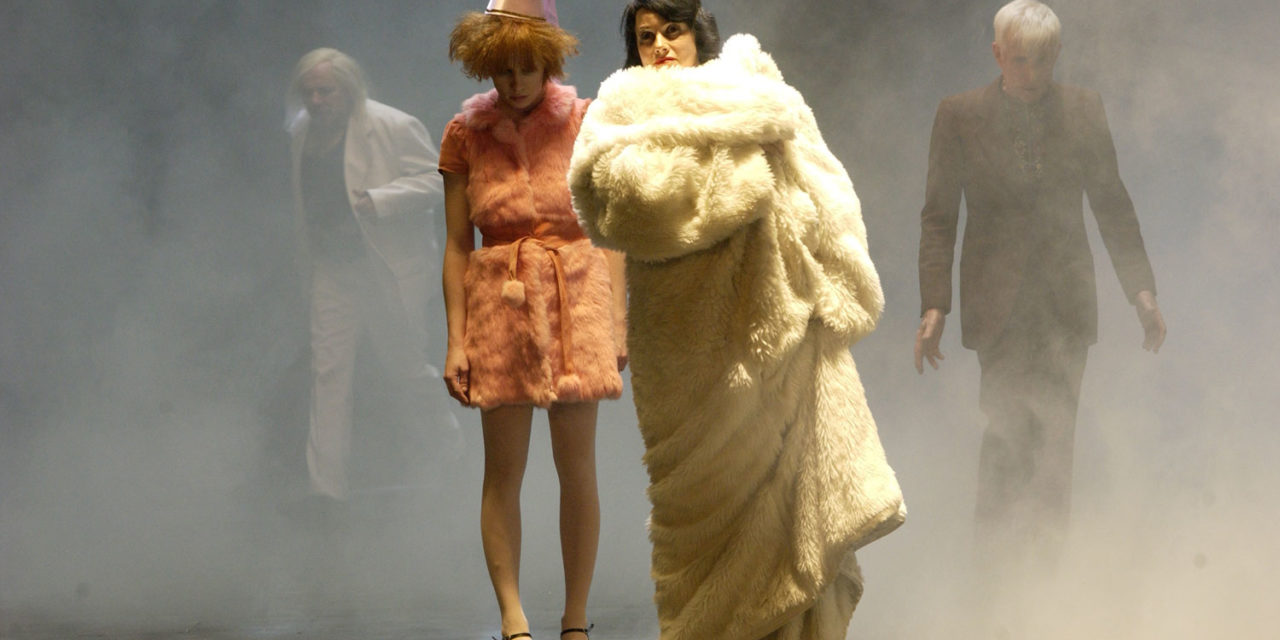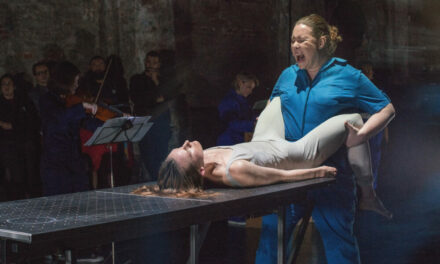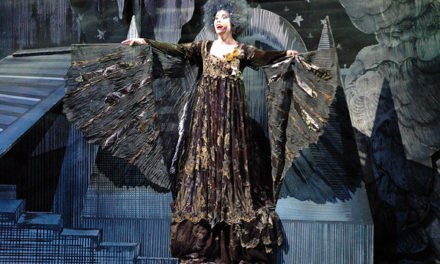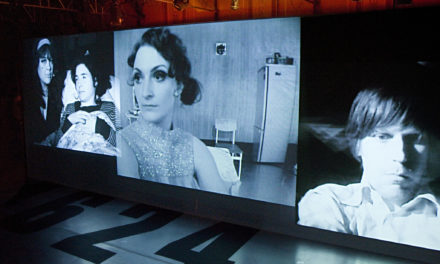Katrin Brack and Barbara Ehnes, two set designers, have influenced and even changed the theatre. The publisher Theater der Zeit has brought out well-designed picture books about each of them.
In the theatre, we first experience the happiness of seeing a new world, or the happiness of seeing the world very differently, through the set design. Its effect is present not only during the performance; when we remember the production we also, first of all, see images.
ART SPACE
Jeff Koons by Rainald Goetz at the Deutsches Schauspielhaus in Hamburg, 1999 was simply overwhelming. Furiously modern, gaudy, spaces within space. The set design shows the world as it could be when art and commerce collide with relish, ironically exaggerated, the birth of pink on stage. Koons’s human-sized stuffed animals act alongside the actors, Andy Warhol’s Factory drives in and is an art space within an art space. Set design: Barbara Ehnes – this Hamburg production made her known overnight.
Pop writer Rainald Goetz wrote about the pop artist Jeff Koons, and the director Stefan Bachmann, who likes to be called a pop director, and his set designer stirred up theatre aesthetics anew. What is “pop” for Ehnes? “The contemporaneity of materials, quotations from pop culture and a certain artificiality.” Thus, Ehnes constantly works with quotations and creates, with absolute artificiality, a truth that always naturally serves the intentions of the director and the play. Remembering Jeff Koons, the comically desperate attempts of the characters to gain importance comes in one’s mind, affection, fame, to maintain their positions in ever-changing spaces.
SYMBOLIC SPACE
Thinking of Iwanow, a white-grey chill runs down my spine stays in mind; the feeling of desolation, the sadness of the characters in their colorful circus costumes. Iwanow by Anton Chekhov at the Volksbühne on Rosa-Luxemburg-Platz, premiered in 2005. On stage, you can see people and mist, nothing else. This stage design by Katrin Brack provoked the imagination of the actors and audience in an unexpected way. Created its own magic realm, which was transformed in each performance, could develop its own dynamic. The befogged Ivanov was a symbolic space, which mapped the aimless groping, the inner uncertainty of human beings. A fleeting, diffuse, intangible space in which time had stopped.
Katrin Brack invented something unique, to wit worlds that are altogether invented, mainly filled with only one material, dilated spaces. The illustrations show artworks that speak for themselves. They enchant us with an unexpected ease and serenity. A child’s dream: confetti, streamers, swings, foam, mist, golden garlands, balloons. Any child would joyfully throw itself into this and play along. But how does an actor move who is supposed to invent, embody a character in a space full of confetti? Full of streamers? Full of golden garlands?
REALITIES
The resistance that Katrin Brack’s spaces offer the actor appear at first insuperable, but then become a liberation, inspire the imagination. Barbara Ehnes’s stage sets, on the other hand, are highly complex and can be perplexing, as in the Andersen Projekt (i.e. Andersen Project) at the Thalia Theater in Hamburg in 2010, where unsuspected reflections and videos that virtually intervened in the action made the second and the third dimensions indistinguishable. But if you looked into the complexity on the stage, thought yourself into it, you were richly rewarded.
It is always about creating space for new ways of looking at a matter, new modes of performance, new ways of thinking. This calls for strategies of surprise and perplexity. Ehnes tracks reality by creating new realities. Her set designs are a challenge not least because she likes to transform spaces, subvert the proscenium stage – for instance, by turning the stage into a steep slope, levitating actors in armchairs, abolishing over and under for dancers, rotating the stage area. When actors are ice-skating on ice, as they were in a production of Chekov’s The Seagull in 2000 at the Hamburg Schauspielhaus, they think and read their texts differently, and the audience perceives them differently.
While Ehnes lays layer upon layer and in this way intervenes in the spaces, Brack makes a space available, specifically and symbolically. Both create spaces of high artificiality, which assert their own reality. Ehnes is a creator of alternative worlds, Brack of dream spaces. A space designed by Brack dreams. A space designed by Ehnes narrates.
The boldness, beauty and symbolic power of their sets can, fortunately, be relieved in the many photos of performances in the volumes now dedicated to each of the two artists. Interviews and commentaries illuminatingly complement the photographs.
Translation: Jonathan Uhlaner
This article was originally published on the Goethe-Institut. Reposted with permission. Read the original article.
This post was written by the author in their personal capacity.The opinions expressed in this article are the author’s own and do not reflect the view of The Theatre Times, their staff or collaborators.
This post was written by Ulrike Kahle-Steinweh.
The views expressed here belong to the author and do not necessarily reflect our views and opinions.


















